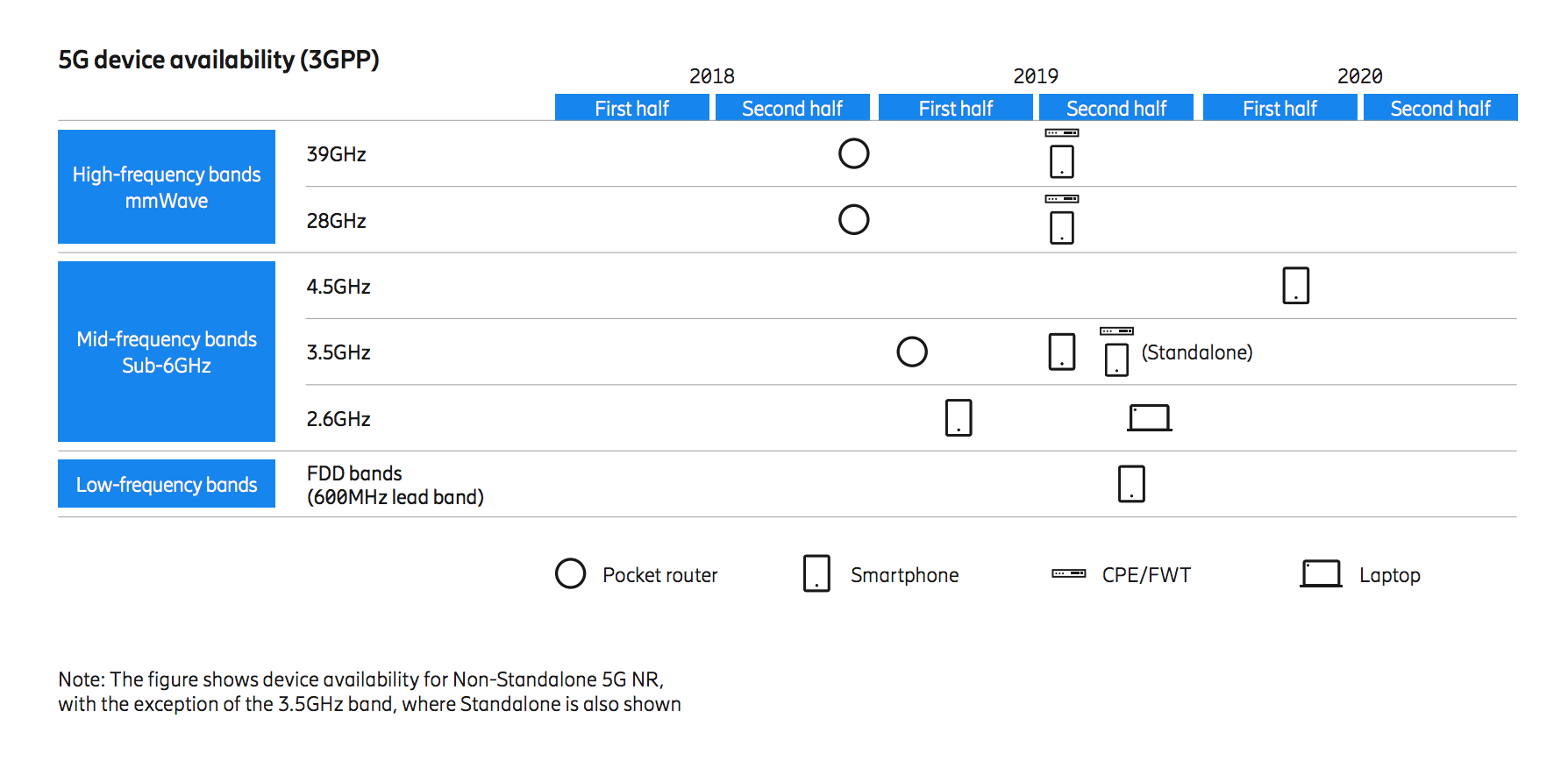5G-ready smartphones won’t start appearing until the first half of 2019, according to the latest Ericsson Mobility Report.
Ericsson expects the first smartphones supporting 5G to be available in early 2019, according to its June Ericsson Mobility Report. The report came out before the 3GPP Release 15 standards were frozen at last week’s Radio Access Network Plenary. Overall, Ericsson favors 1 billion as the number of 5G devices that will be available by 2023.
“5G will kick off with enhanced mobile broadband as its first use case. By the end of 2023, there will be 1 billion 5G subscriptions, accounting for around 20% of mobile data traffic. The massive ramp-up of 5G subscriptions is expected to be fueled by third-generation chipsets, which will be available from 2020 on a variety of frequency bands,” said Ericsson’s Fredrik Jejdling, executive vice president and head of Business Area Networks, in a letter included in the report.
First, the chips must come: Ericsson says 5G device availability is based on when first-generation chipsets following 3GPP standards will become available.
Fixed wireless broadband customer premise equipment (CPE) and pocket routers are ideal for the first rollout, the Ericsson report says. CPE devices won’t have extreme space limitations, so multiple antennas are not an issue. Also, battery and power issues are eliminated (the devices are expected to plug in to wired power) and they usually serve multiple users, which makes CPEs the proverbial low-hanging fruit — ideal for initial 5G rollouts. Look for those devices in second half of 2018.
Enhanced mobile broadband and smartphones come next, with the first commercial smartphones supporting 5G in the mid-bands expected in early 2019. Devices that support millimeter wave spectrum bands are expected in early to mid-2019.
Ericsson thinks the first module-based 5G devices, supporting ultra-low latency communications for industrial process monitoring and control, will arrive during 2020.


